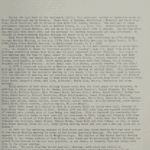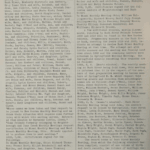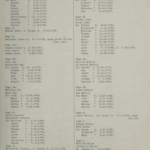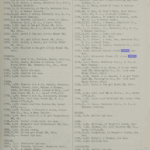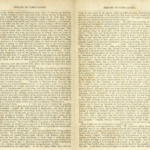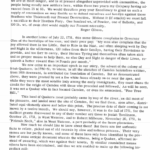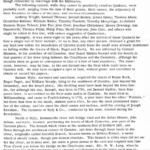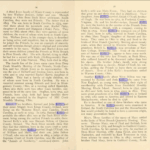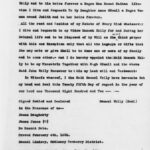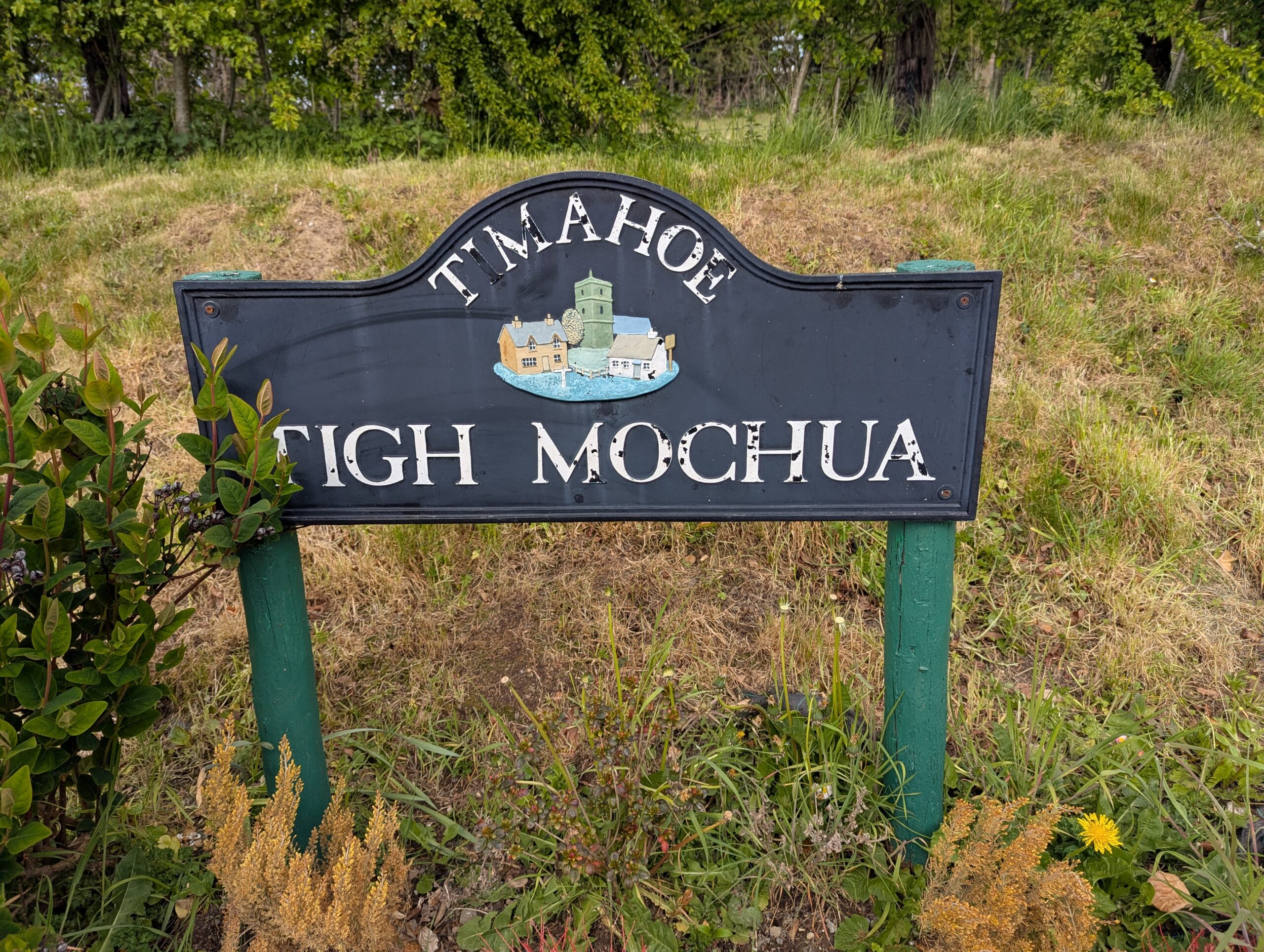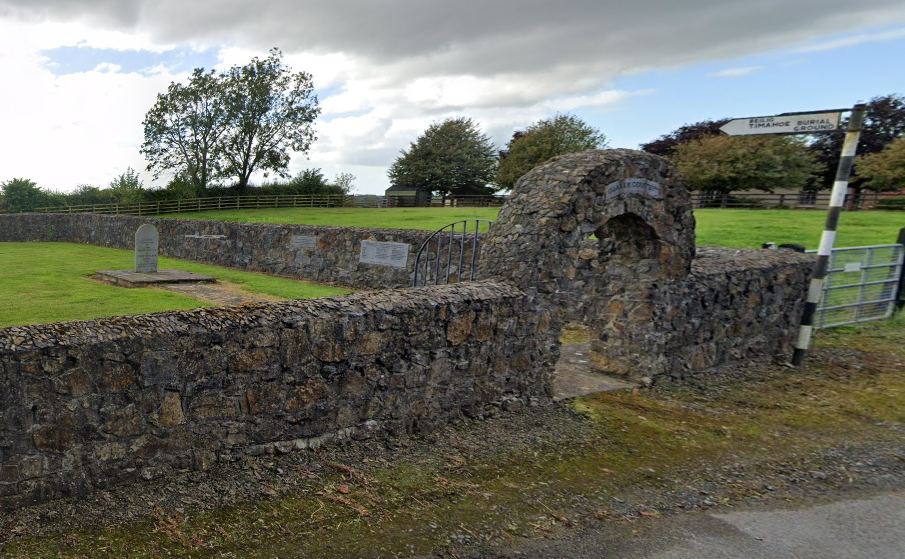
Once we returned from our Ireland trip, I had several lingering questions that I wanted to answer:
- What happened to Timothy and Samuel Kelly after they immigrated to the British Colonies in 1751?
- Was there any record of Walter Kelly in the Quaker communities in North America?
- Were any of the other facts related in the excerpt from “The Kelly Family” by Verna Hurlbut Carroll true?
Here is the excerpt from the document my Dad shared with me that I wanted to verify:
The following is extracted from THE KELLY FAMILY by Verna Hurlbut Carroll, Denver, Colorado. 1993: Walter Kelly apparently came with the Irish Quaker colony, which included Timothy and Samuel Kelly, in 1751. He came from Timahoe, a small town in County Kildare, Ireland, not far from Dublin. This colony located themselves in the scattered settlements between the Wateree and Lynches Rivers, South Carolina. In 1754 Walter Kelly received a Royal Grant for 350 acres in Craven County, South Carolina (Roll ST 61, Vol.6, P.190). On 17 Sep 1754 Samuel Wyly certified that he had measured and laid out to Walter Kelly a tract of land on the south side of Wateree river, bounded by the Wateree River on the south side, by George Bearfoot's vacant land to the northwest and by Couciler Michies vacant land to the southwest (Colonial Plat Roll ST 42, Vol.5, P.456). On 28 May 1759 Walter Kelly and his wife Elizabeth leased to John Pain for one year. This lease was signed by Walter Kelly of Craven County, South Carolina, 2 Jun 1759. On 2 Jun 1759 Walter Kelly, cordwainer, and Elizabeth Kelly, his wife, released to John Pain, blacksmith, for one hundred and fifty pounds, this same property. In this release Walter Kelly is referred to as Walter Kelly, Senior.
Despite extensive efforts, I have been unable to find a copy of THE KELLY FAMILY anywhere online, or on reserve in any library. It may have been a self-published book that is only available in a select few private collections. So without access to it, I set about trying to independently verify what it said as well as to answer my other questions.
South Carolina Quakers
My next avenue of investigation was to attempt to figure out which Quaker community Timothy and Samuel Kelly actually arrived at once they made it to North America. For this, I relied on the method mentioned on this website which suggested finding a copy of the book Encyclopedia of American Quaker Genealogy. This book is divided into 6 volumes, and the first volume includes both North Carolina and South Carolina so it seemed like a good starting point. It turns out a full online copy of this book is available through the archive.org website, which made my search much simpler and faster. Several other books I later looked for were also available there, so it turned out to be a great resource!
The book is divided into separate sections for each Quaker meeting covered in the book, and it acts as an index of names mentioned in the meeting summaries that the Quakers kept. The text of the online copy of the book is searchable, so after looking for any reference to “Kelly” I found something promising, several references to a Samuel Kelly in the Bush River Meeting located in South Carolina:
The text also mentioned that Samuel Kelly and others moved from Camden, South Carolina where they were initially located:
William Coate was living near Bush River before 1762, and Samuel Kelly, a native of King's County, Ireland, removed to Newberry County, from Camden, in 1762. Other early Quaker settlers were John Furnas, David Jenkins, Benjamin and William Pearson.
These sentences rang additional bells for me, because King’s County is adjacent to County Kildare and is where Edenderry is located, which was the home of Timothy Kelly from the earlier documents! Further supporting evidence were the names Furnas and Pearson, which are known Quaker family names from Timahoe from the the wedding document, and also the St. Mochua Society plaque at the graveyard I visited.
So I started to look into the Bush River meeting more closely, and found more information about it on the website quakermeetings.com. That’s when I noticed this:
Local-related histories: COMPILED BY WILLARD HEISS, QUAKERS IN THE SOUTH CAROLINA BACKCOUNTRY: WATEREE & BUSH RIVER (1969). JUDITH RUSSELL et al., THE HISTORIC BUSH RIVER QUAKER CEMETERY, NEWBERRY, SOUTH CAROLINA (2006). CHAPMAN & O'NEALL, "QUAKER SETTLEMENT ON THE BUSH RIVER", THE ANNALS OF NEWBERRY (1892, REPRINTED 2003), pp. 28-35. MOTES & MOTES, LAURENS AND NEWBERRY COUNTIES SOUTH CAROLINA: SALUDA AND LITTLE RIVER SETTLEMENTS 1749-1775: NEIGHBORHOOD MAPS ... (1994)
This says that there is a book about a historic Quaker cemetery there which still exists, so I decided to do a search for the cemetery itself. That turned up a page on findagrave.com about the cemetery, and a search for Kelly turned up a grave for Samuel Mickle Kelly! All of the details fit the Samuel Kelly from Edenderry and the Timahoe Quakers, including a father with the name Timothy, a brother named John, and a middle name with the same name as Abigail’s maiden name Mickle. This definitely answered my question of what became of Samuel (and likely Timothy) Kelly after they left Ireland, they ended up living near Camden, South Carolina and eventually relocating to the Bush River Quaker community about 75 miles of Camden. But I still had some lingering questions, such as why they were in South Carolina instead of North Carolina like they originally intended, and what if any relation did they have to Walter Kelly.
Reconstructing the Journey from Timahoe to Bush River
I continued to dig into books related to the Quaker communities at Camden and Bush River, and soon discovered more. One useful resource was the Guilford College Library which serves as the repository to most documents related to these communities. One document called The Irish Quaker Community at Camden by Kenneth L. Carroll was very helpful in summarizing and pointing to related primary sources. The first of these primary sources were the The Memoirs of James Gough which presents a first hand account of someone who was at the Quaker community in Timahoe immediately prior to their departure:
In our way we spent the first-day among our friends at Timahoe, it being the last meeting there to many of them. For in a few days after, several of their families came to Dublin to embark for North Carolina, to settle upon my cousin Arthur Dobbs' lands there, who was their landlord at Timahoe, and who, upon my application, had offered to me for life, and after it to my son John and his heirs, one thousand acres of that land. Robert Millhouse, of Timahoe, was to choose land next to that which himself should take, but the captain of the ship in which they went, not being well acquainted with the coast, ran too far to the southward, landed them at Charleston in South Carolina, and thereupon they settled in that province, so I was disappointed in my expectation of getting the land taken up by him.
So this fits with what happened before and led to what came after, they intended to go to North Carolina originally, but the ship accidentally landed at Charleston, South Carolina instead. Then instead of attempting the overland journey to their original destination, they decided to stay in South Carolina and established themselves near Camden. These pages from the book Quakers in the South Carolina Backcountry relates more of the story of what happened after they arrived in Camden:
To summarize, the Timahoe Quakers probably arrived in Camden by river boat on the Wateree River in fall 1751. Several members of the Quaker community received royal land grants in the area. The book also lists Walter Kelly as among the members of the Quakers, although it isn’t clear by what exact method it established this nor does it list its source. Another book, Centennial Anniversary of West Branch Monthly Meeting of Friends relates specifically what happened to Timothy Kelly’s children:
They relocated to the Bush River settlement in 1762 from the Wateree settlement, which explains why Samuel Kelly is buried there. Interestingly, there appears to have been a dispute amongst the Quakers in these early settlements about the morality of owning slaves, as many of them initially owned slaves after moving to the area. Samuel Kelly was one of the few that refused to give up his slaves and was disowned by the community who became abolitionists. The abolitionists moved north, and the others remained in South Carolina. The will of Samuel Kelly shows that he even passed these slaves on to his children:
But as far as Walter Kelly is concerned, the trail appears to go cold in Bush River as there is no mention of him at all there in any documents I’ve been able to find. If the book THE KELLY FAMILY is true, then this tracks with the events it describes since it says he sold his land in South Carolina in 1759 and then departed for Virginia, which would be three years before the Timahoe Quakers relocated to Bush River in 1762.
To be continued in Part 4…
